A celebration of the Super Puma family and delivery of the 1000th Super Puma helicopter
Celebration of the Super Puma family and the delivery of the 1000th Super Puma – a twin-engine multi-role H215 assembled in Marignane, France, and handed over … Read more
The H225 is the choice of commercial operators and governmental agencies for its long range and all-weather search and rescue (SAR) capabilities. As a reference in its field, the H225’s autopilot provides precision, stability, flight envelope protection and pilot assistance, including dedicated SAR upper modes.
Its payload and range capability make the H225 the most cost-effective helicopter for long-distance offshore crew changes.
The H225 also has high payload and versatile configurations to suit missions such as:
- Aerial work
- Firefighting
- Passenger transport
- Law enforcement
- Utility missions
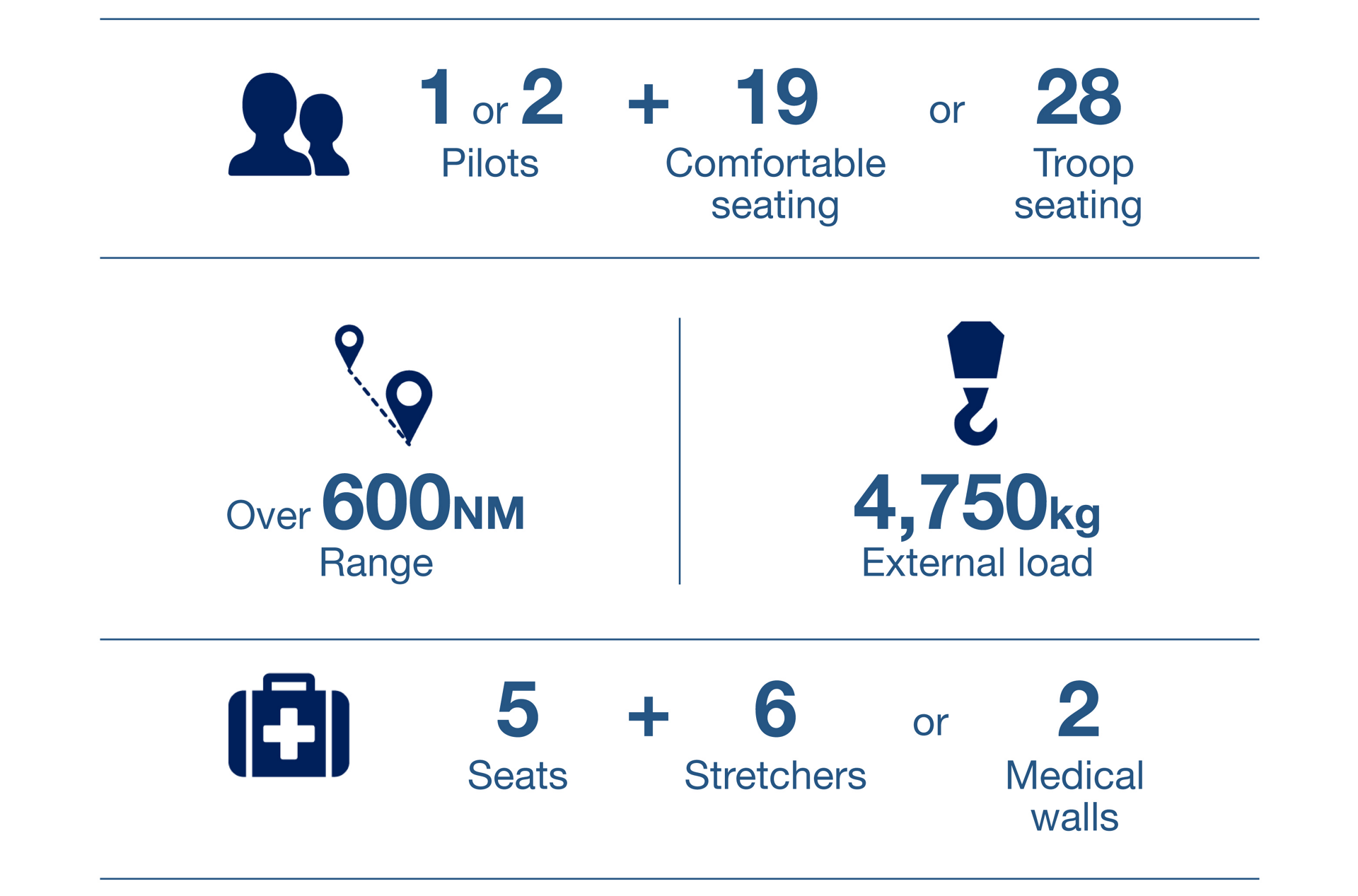
The SAR reference
The H225 and H225M have been selected and operated by 20 countries for SAR missions around the world.
Aircraft
Rugged, strong and ready
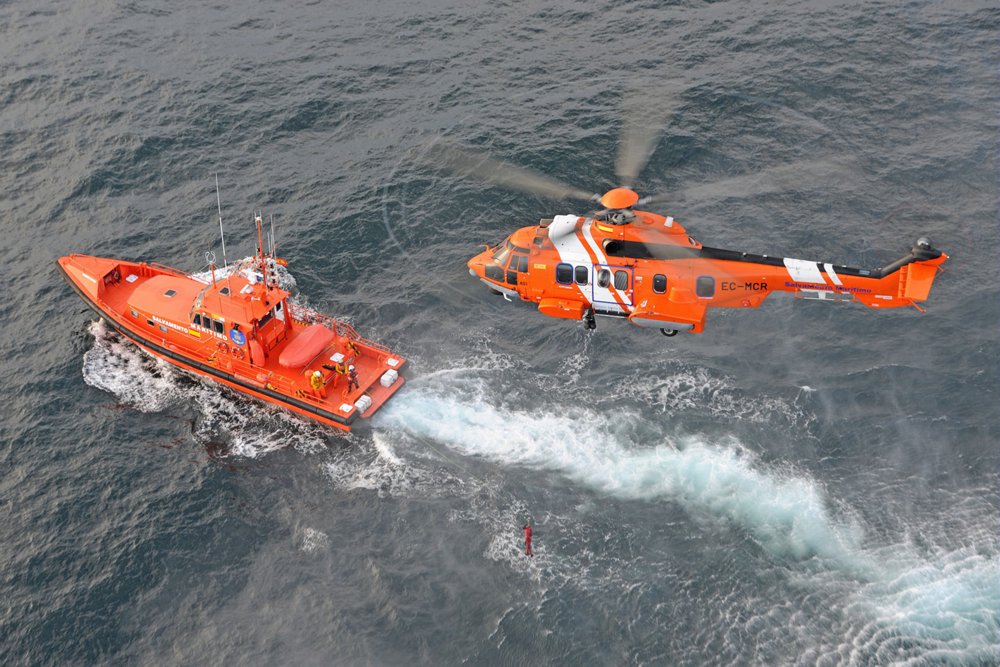
The H225 is the latest version in Airbus’ proven Super Puma family, which has accumulated more than 5.8 million flight hours during operations around the world, in the harshest conditions including severe icing conditions and highly challenging maritime environments. Moreover, its military version, the H225M, has operated in the most demanding combat SAR (CSAR) missions.
The reference in pilot assistance for safety and mission efficiency
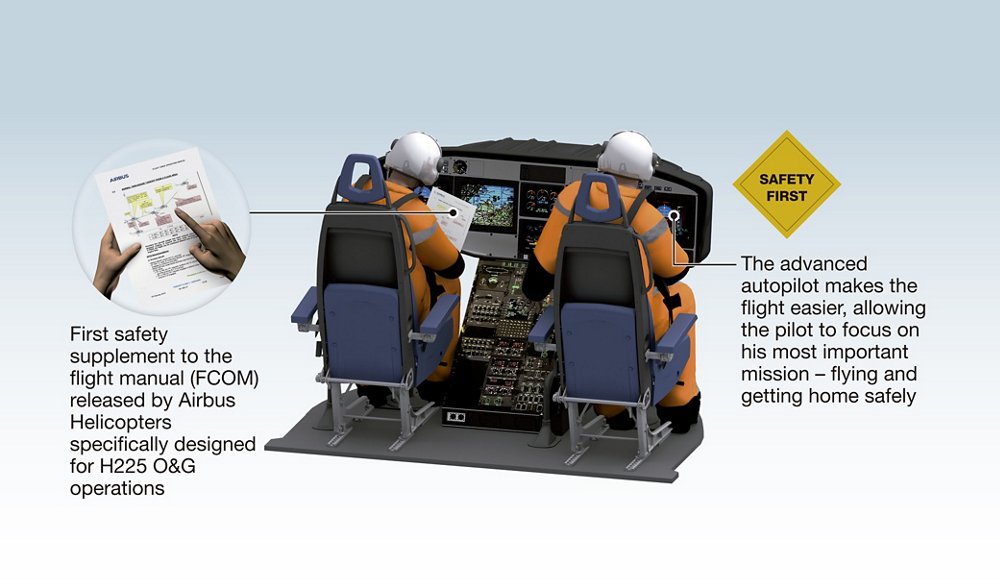
H225 avionics and autopilot systems reduce crew workload while enhancing safety, especially in the most demanding mission phases or conditions, through enhanced situational awareness and automatic modes or protections.
The flight crew benefits from the real-time display of power margins, and from automatic features such as automatic level-off at low heights, an automatic collision avoidance procedure, vortex ring protection, automatic rig approach up to the visual decision point, RNP approach down to LPV minima (precision approach), search pattern, automatic transition down to hover (Trans-Down), and fly away.
The H225 is a true all-weather helicopter, the only helicopter with full de-icing certified for flights up to severe icing conditions.
The H225 is the first helicopter in the industry to benefit from an OEM-issued flight crew operating manual whose intent is to optimise the best use of the aircraft’s automation and aircraft systems in offshore missions.
The versatile heavy-lift solution
Missions
Oil & gas crew change
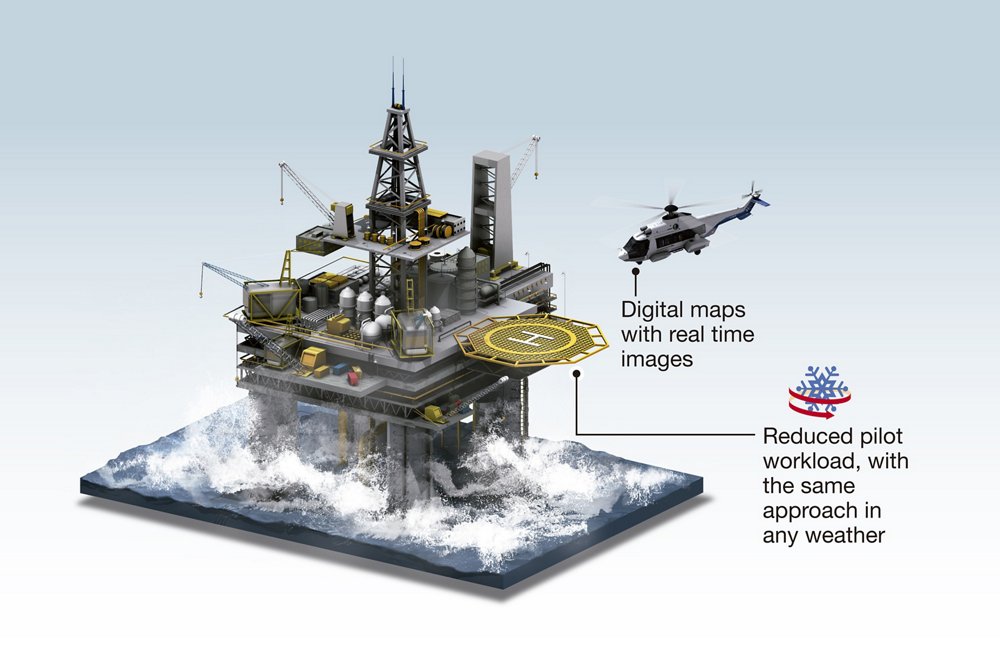
To meet the energy industry’s needs as exploration and production move farther offshore, the H225 combines the ability to carry 19 passengers in its air-conditioned cabin with its heavy-lift capacity and excellent range. Cabin space is unhampered by the need to carry a fuel tank, whatever the mission range.
The H225 offers an automatic rig approach mode, Rig ’N Fly, that brings the helicopter up to the landing’s visual decision point. The pilot can select either a direct or an offset approach. The navigational display shows the oil rig waypoint, oil rig radar echo, current flight plan, plus an automatic identification system (AIS) from ships which allow crews to anticipate potential obstacles and to modify the approach with a safer and more efficient trajectory.
The aircraft’s role-change capacity enables a rapid reconfiguration to over-water search and rescue (SAR) duties.
Search and rescue
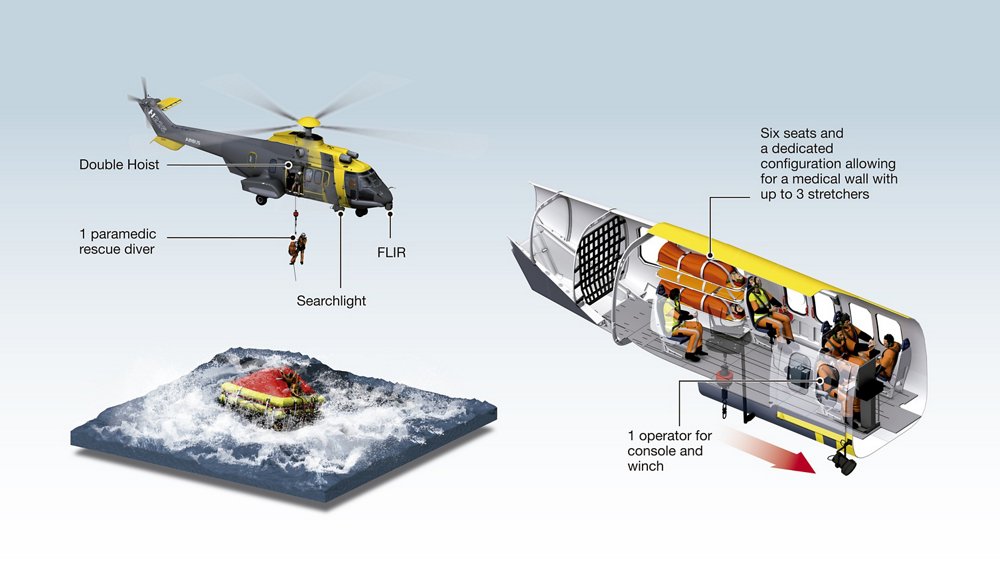
The H225 is recognised as the reference in SAR operations thanks to a takeoff sequence of less than five minutes; an all-weather capability including in severe icing conditions; and an extra-long range with auxiliary fuel tanks, leaving its long cabin free for the mission.
Cockpit crew benefit from SAR modes with search patterns and an automatic transition to hover with one-metre precision starting from any flight attitude. The work of cabin crew is aided by precise hoisting and hover control from the cabin, as well as the H225’s long cabin with wet and dry areas, large windows and wide sliding doors.
A range of mission equipment is available, such as an electro-optical system (EOS), searchlights, cabin console, hailer public address system, an automatic identification system (AIS), direction finder, radar, dual hoist and stretchers.
Utility, aerial work, fire fighting
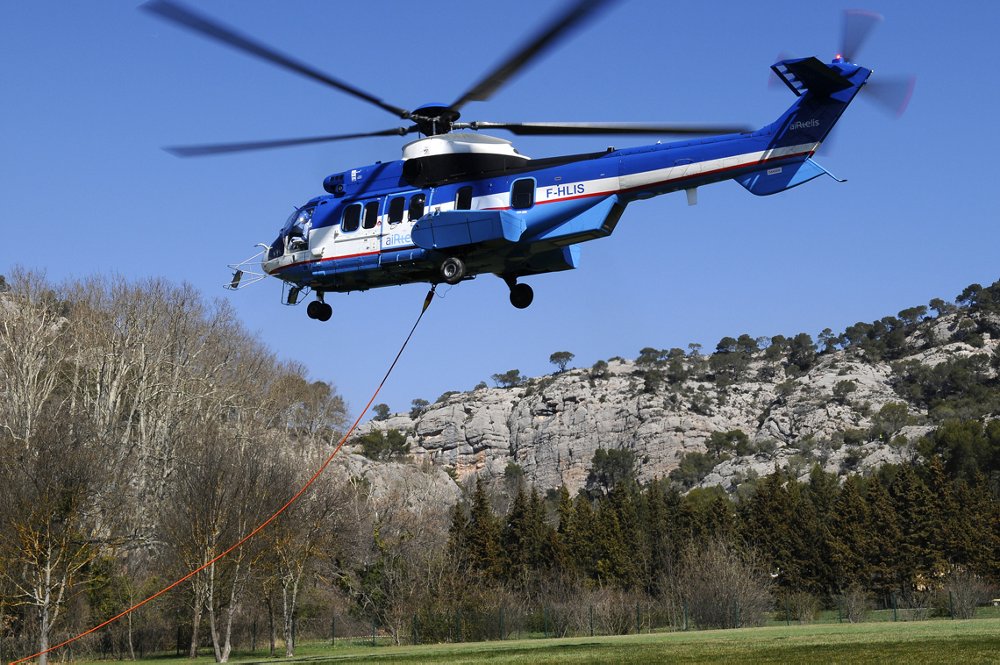
With superior lifting power, endurance and manoeuvrability, the H225 is always ready for the most rigorous utility, aerial work, firefighting and power line missions.
Thanks to the real time display of power margins and state-of-the-art vehicle monitoring system (VMS), pilots can fully concentrate on the mission at hand. During the transportation of sling loads, the 4-axis autopilot maintains exceptional precision and stability.
Armed with powerful engines and a sling capacity of up to 4.75 tonnes, the H225 makes heavy lifting easy, while certified equipment and proven procedures ensure the highest levels of safety.
Typical missions include power line repair; pylon assembly in remote areas; cable-laying; aerial pruning; and air crane missions. The H225 is the only class-C certified helicopter for hook operations.
For firefighting missions, solutions include a belly tank, belly water cannon or water bombing kits. The H225 is a civil certified helicopter that can both battle fires and transport firefighters to and from the scene, as well as reconfigure to other missions in fires’ off-season, including passenger transport.
Private, business and governmental
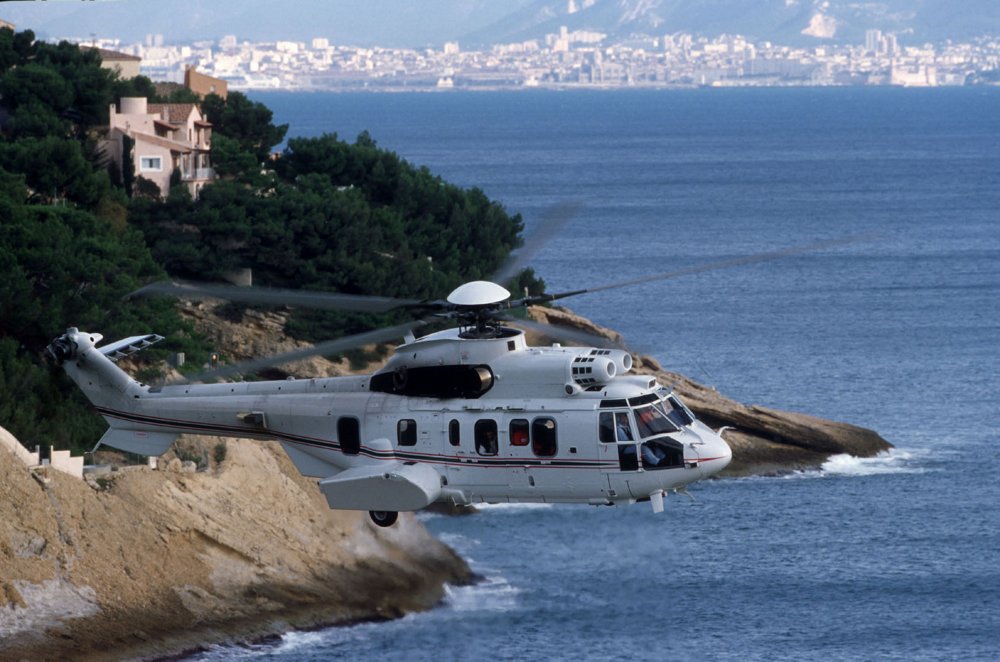
The H225 can accommodate up to 11 passengers in exceptional comfort. Selected by heads of state and governments for its outstanding qualities, its attributes include a high cruise speed, low sound and vibration levels, and cabin space.
The H225’s extensive customisations include a cabin featuring one or two lounges, large armchairs, a foldable table, galley, toilet unit, and a wide selection of refined materials.
Technical Description
Configurations
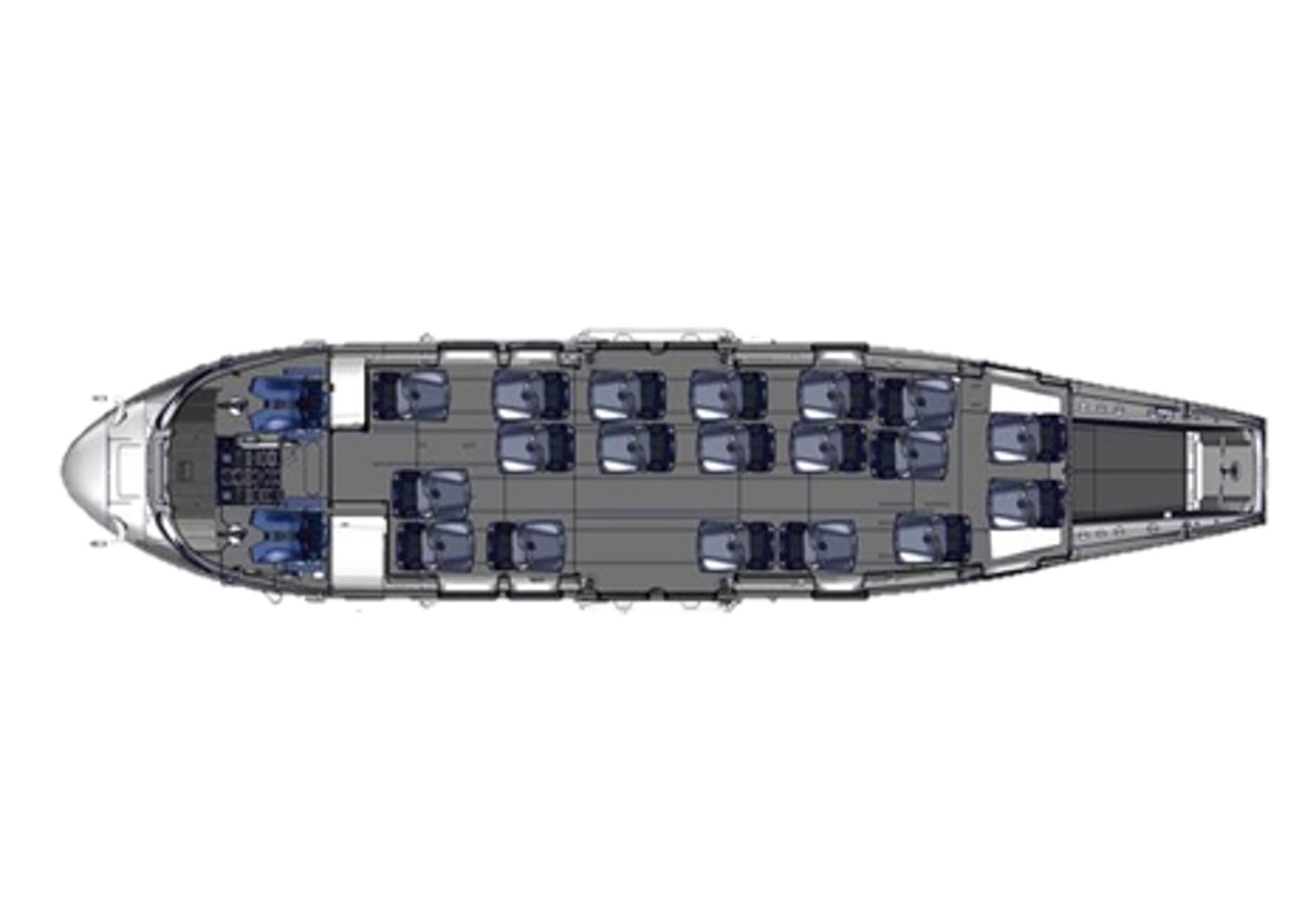
19 seats for passenger and offshore transport
The two pilot and 19-seat configuration is adapted for commercial passenger transport and offshore operations. The air-conditioned cabin and energy-absorbing seats in a staggered arrangement increase passenger comfort, while a central “aisle” and large windows impart a sense of space.
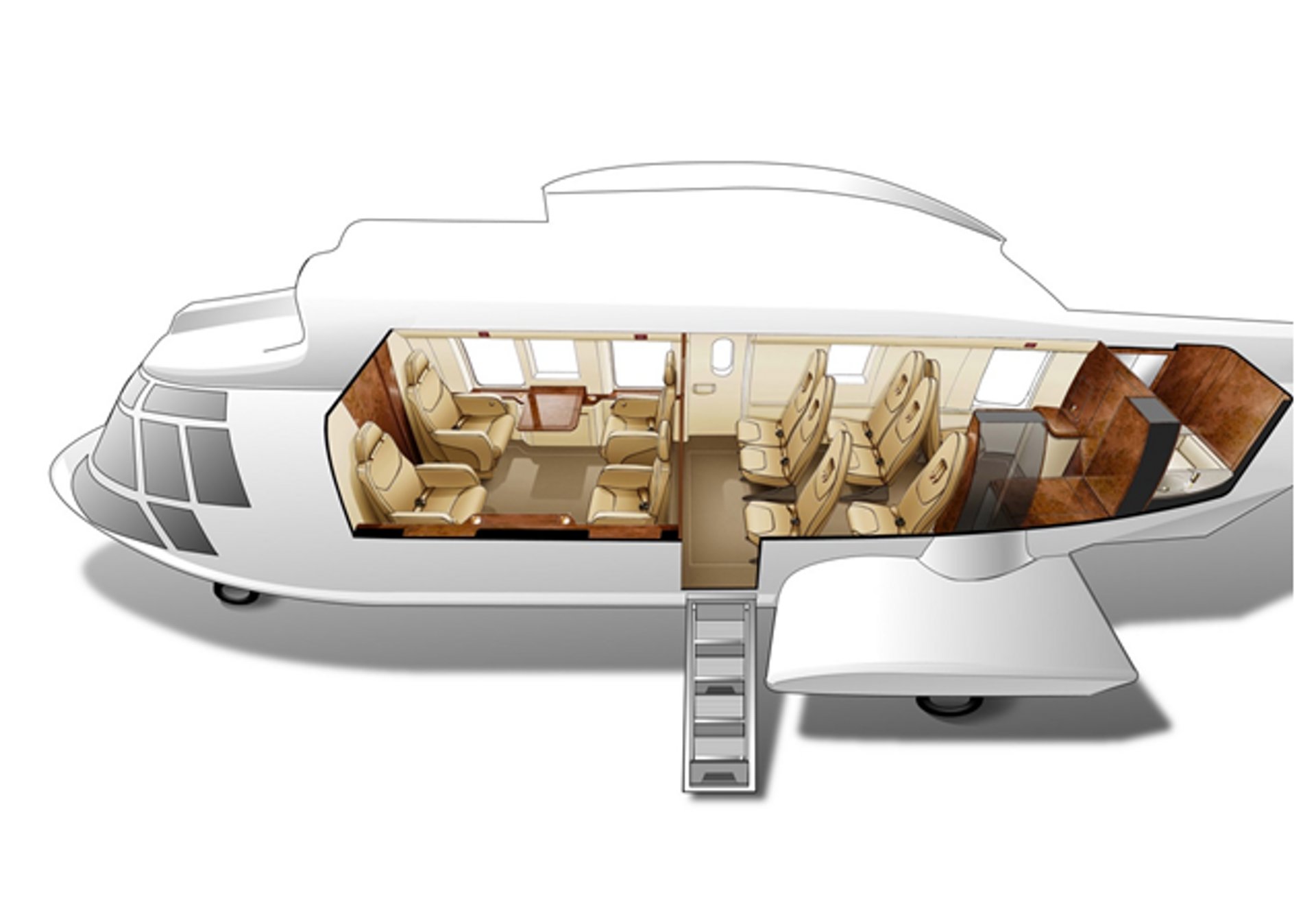
11 seats for VIP transport
The two pilot and 11-seat configuration is a solution for VIP transport, with a front lounge outfitted with four armchairs, a second area with six comfortably-appointed VIP seats and one flight attendant seat, with room for a toilet. Sound-proofed and air-conditioned, the cabin’s space and quiet benefit both work and conversation.
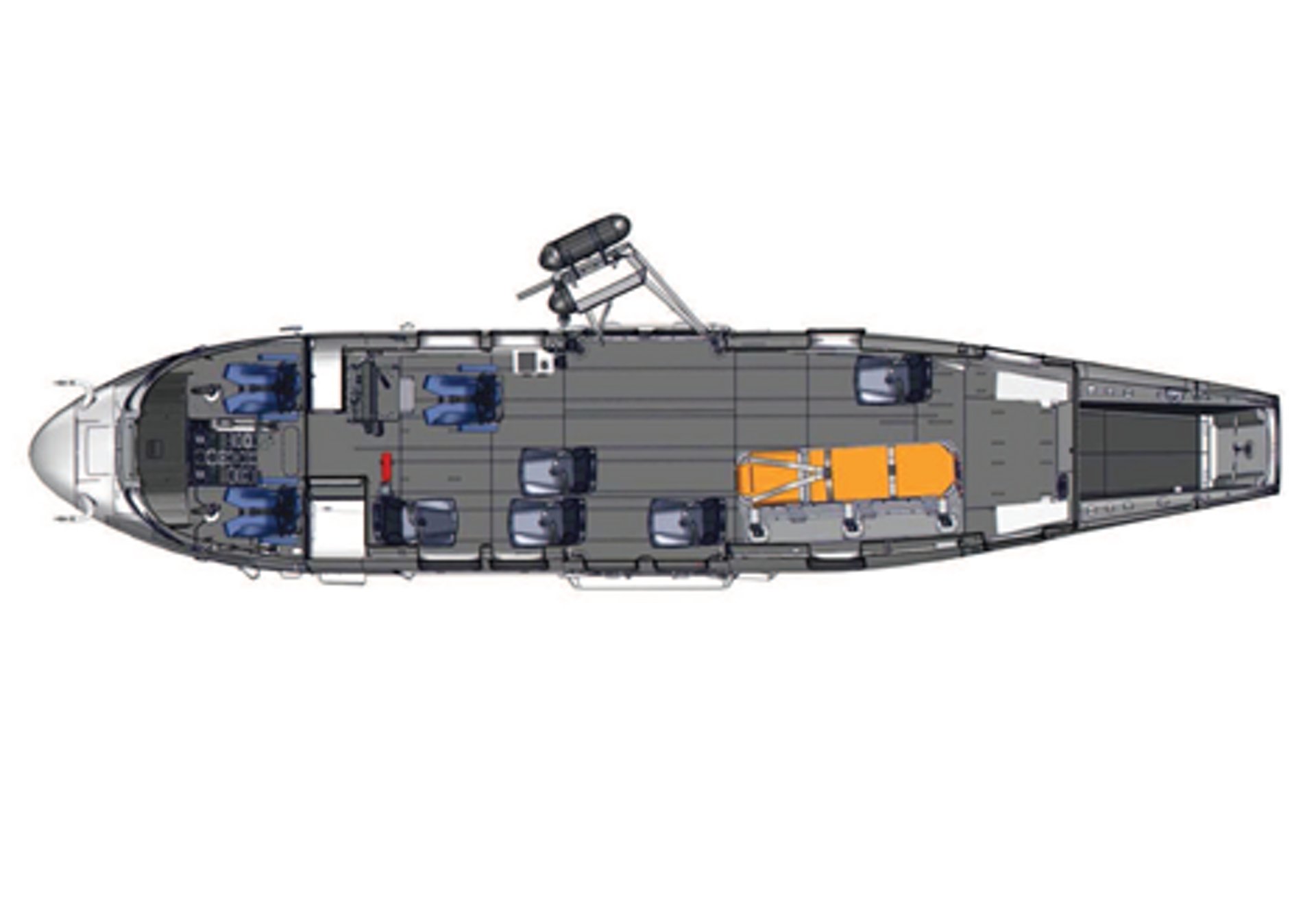
SAR
The two pilot and variable seating configuration is suited to search and rescue (SAR) operations. A sample layout consists of a seating for six cabin console operators and rescuees, plus room for a medical stretcher. For high-volume rescues, the H225 can be configured with up to 18 seats or up to six stretchers.

